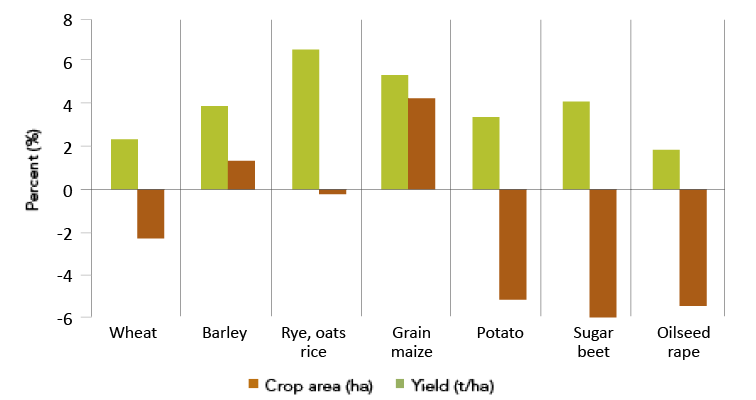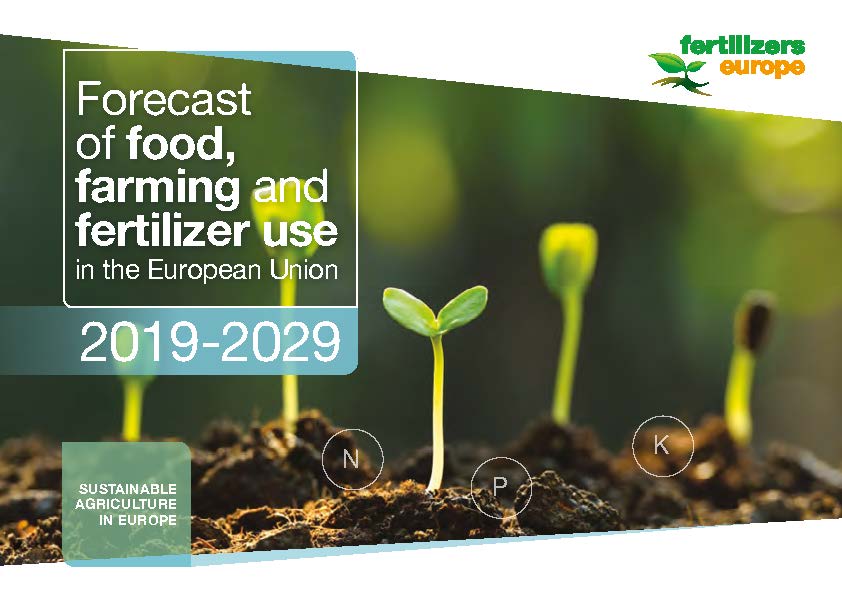Fertilizer Europe publishes each year the forecast of food farming and fertilizer use in the European Union. The publication has been independently recognized as one of the most trusted inputs into the development of agricultural policy in Europe.
Fertilizers consumption in the European Union
After several years of recovery, annual fertilizer consumption over the next 10 years of nitrogen is foreseen to decrease for the third consecutive year. For phosphate and potash, an increase of
the consumption is forecasted but consumption will continue to remain below the levels recorded immediately prior to the 2008/2009 economic downturn. This is partly linked to a significant
deterioration of the agricultural price environment and partly due to the terms of trade for global agriculture observed in the recent years. In addition, the current European regulatory context increasingly puts more emphasis on environmental issues. Being water quality, climate change, or air quality, all these political priorities of several European countries and the European Union are challenging EU’s farming sector as a whole and fertilizer use by farmers as well.
Agricultural land use in the European Union
The fertilized area in countries of the European Union comprises 133.8 million hectares. A further 44.6 million farmable hectares
are not fertilized, of which 34.7 million are unfertilized grassland and 9.9 million idle or set-aside land. Within the fertilized area, arable crops account for 78% (a.o. 51% cereals, 10% oilseeds, 6% fodder crops). Permanent crops account for 6% of the area and grassland for a further 16%. The unfertilized area is evenly spread across countries of the European Union but there are significant differences in fertilized crop areas between countries of Western, and Central and Eastern Europe. In Western Europe (EU-15), the fertilized area comprises 60% arable crops (a.o. 36% cereals, 6% oilseeds, 9% fodder crops), 11% permanent crops (vineyards, orchards, forests) and 30% fertilized grassland. Agriculture in Central and Eastern Europe (EU-13), however, is far more directed towards arable production, which accounts for 87% of the fertilized area (a.o. 57% cereals, 14% oilseeds, 8% fodder crops), with permanent crops and fertilized grassland only comprising 3% and 10% of the fertilized area respectively.



